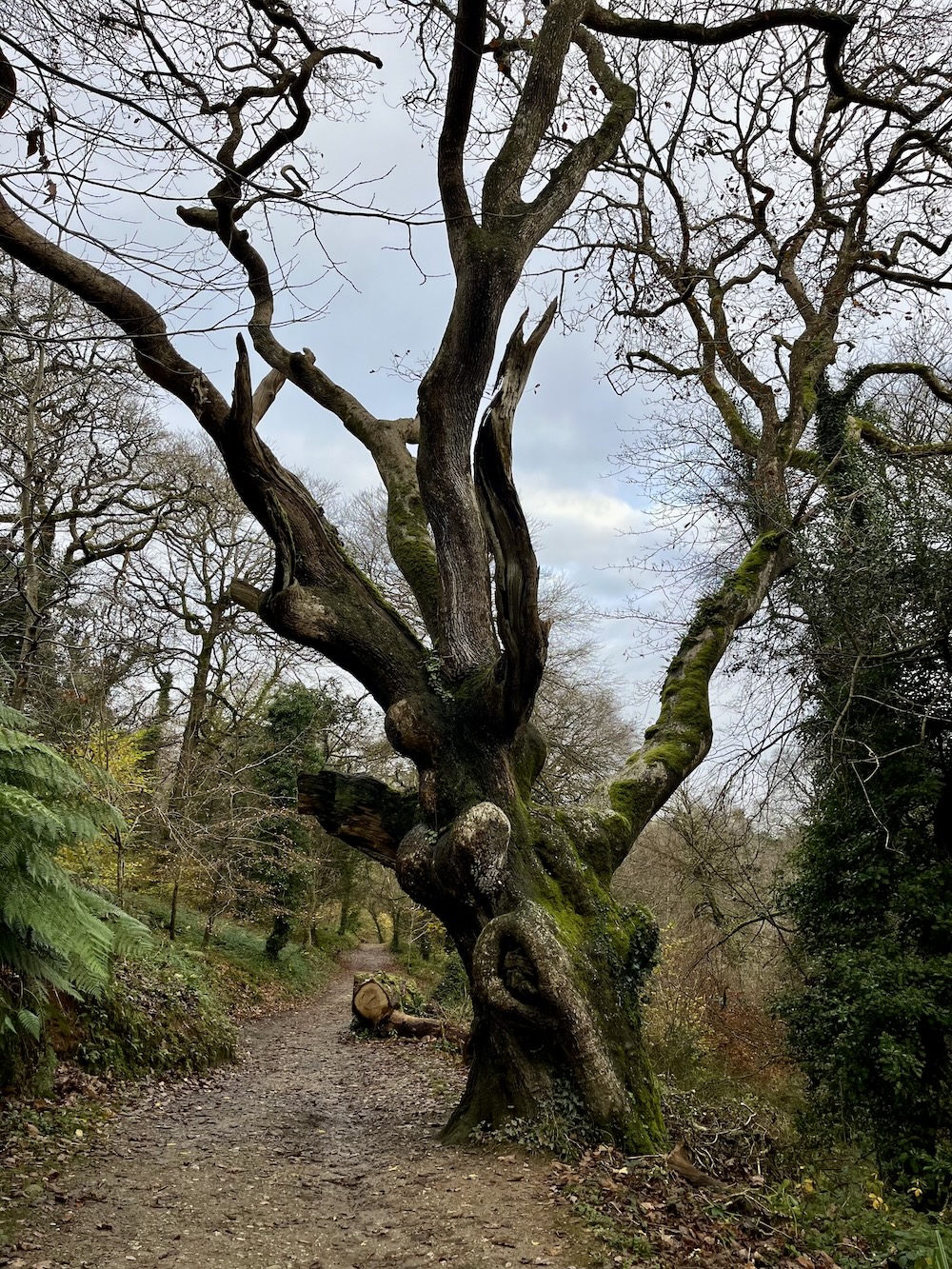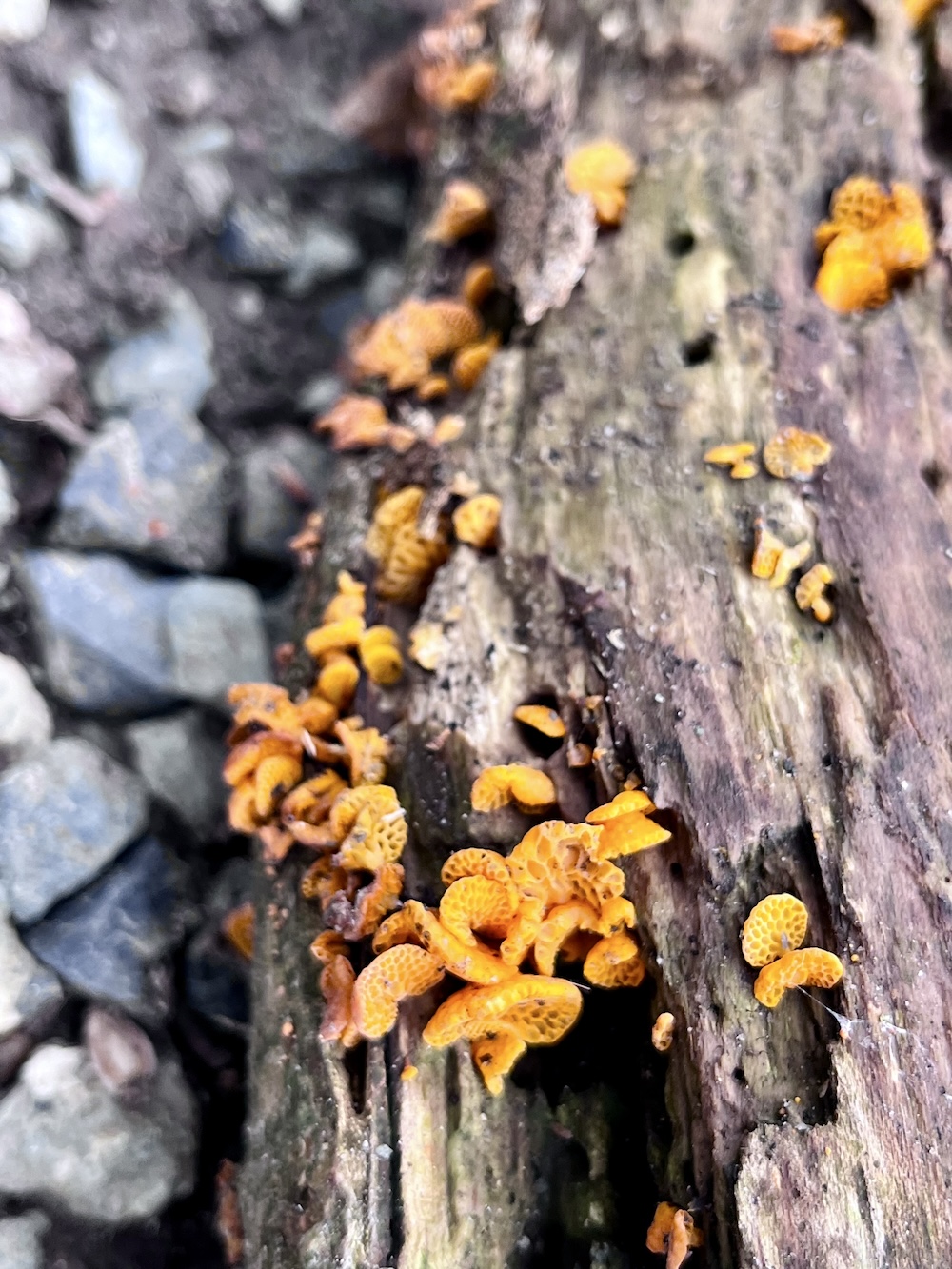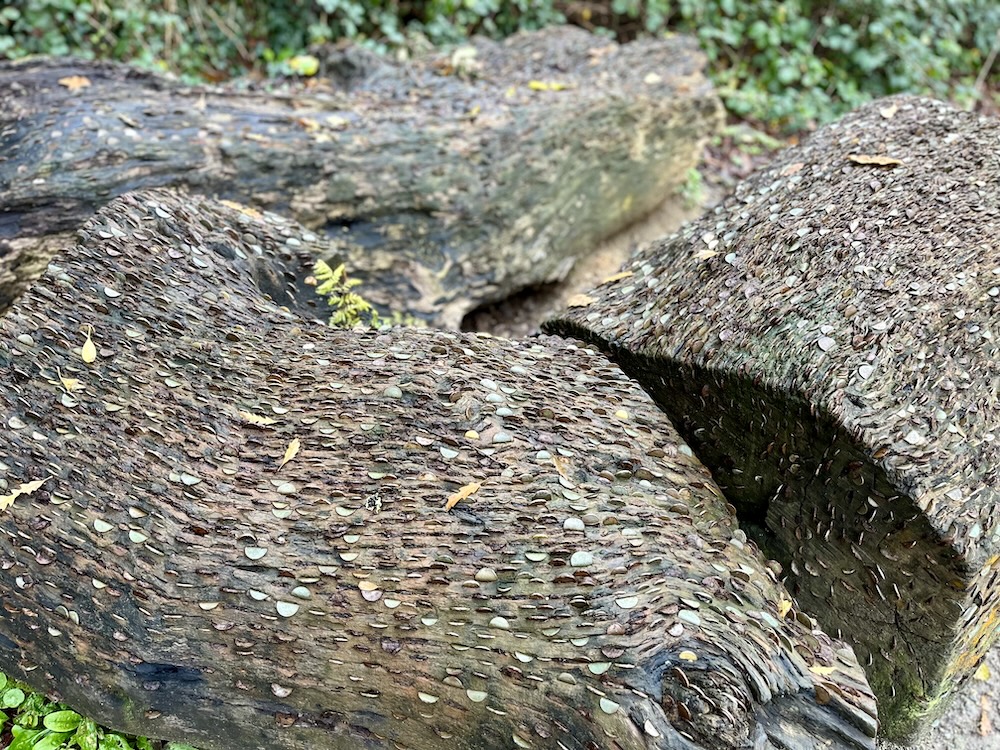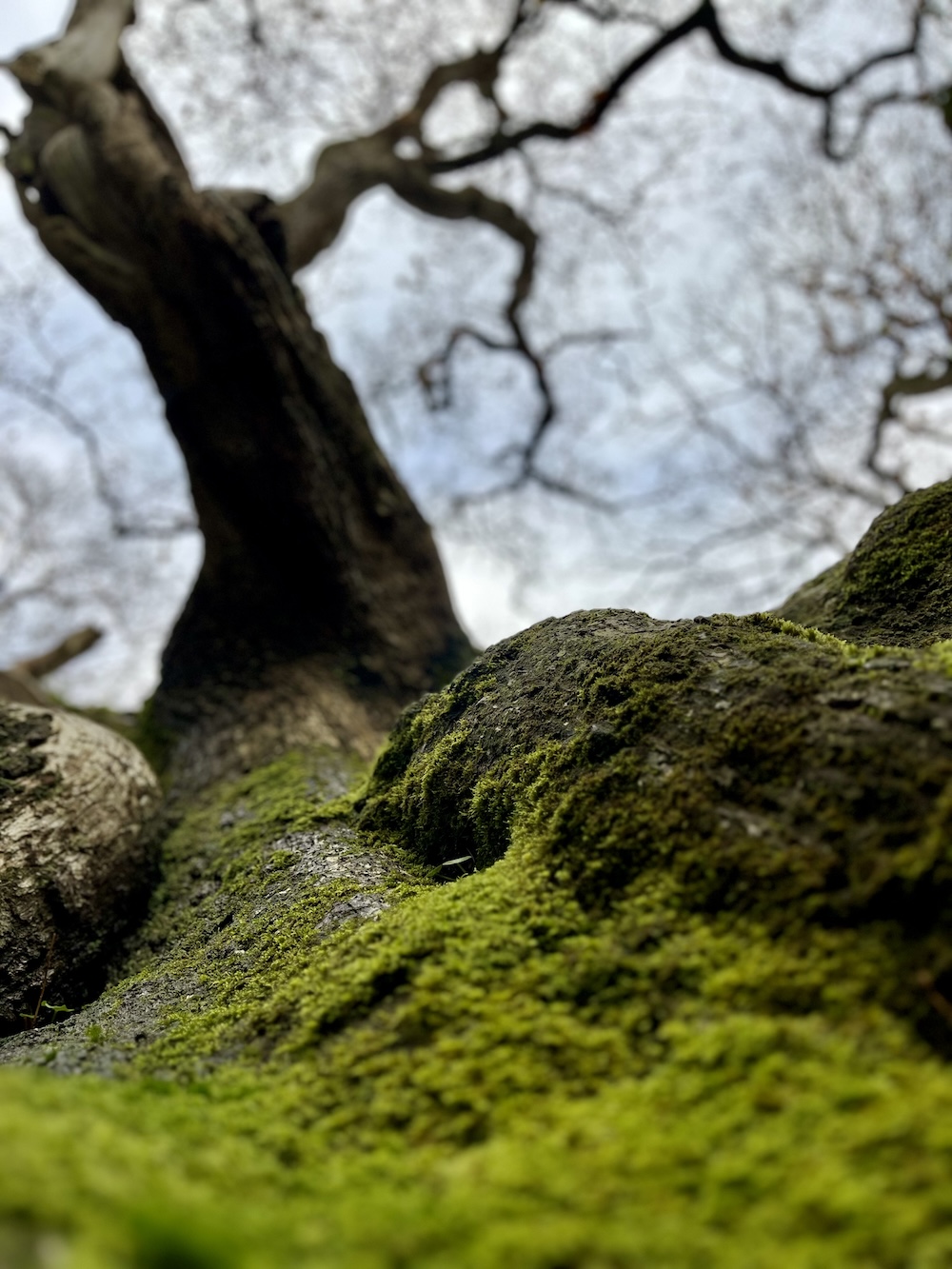From beneath a favourite oak tree, Matthew Shaw contemplates a year of garden paths and hospital corridors.

As I follow the path, listening to the song of the robin, my feathered companion that flitters alongside me, the low winter sun is playing hide and seek between the rich orange autumnal leaves and I’m thinking about my journey through this past year, about the paths I have taken.
Today I am in a garden on a very different path from the hospital corridors of earlier this year. It is sometimes said that being in nature is a healing experience. For me this is true. I feel ever so lucky to be away from the city and the hospital and the feeling of confinement that grew to be so normal, so familiar. That said, and as difficult a time as it was, it also provided a real learning experience; one which I did not welcome but grew to accept. As I walk now along this path by the Cornish hedge — re-built in part by young eager hands learning the ancient knowledge of working with stone — I’m drawn to the fact that there is such continuation in the generations of our human lives that also exists within the cycles of nature. It can be easy to fall into thinking of life in a linear way — our birth, youth, adulthood, middle age and old age. I caught myself thinking about my own life in a linear way, working to move from ill health to good health, that has been my primary concern, and yet I know that everything works in cycles and that it’s all a matter of balance.
As I walk further down this path I can see fields opening up and sloping away to my right. The bottom of the valley is shrouded in mist, and to my left the sun is still peeking through the last of the winter leaves clinging to their branches. The ground is a carpet of fallen leaves, a burned, orange-lined pathway. I pass fallen branches, rotting while providing habitat for other beings that have made a home here. Birds come and go as I walk, their song drifting in and out of reach. Some of the birds are so tame. As I stand still one particular robin comes right up to my feet without any fear whatsoever; aware and hoping that I might leave a crumb or two in my wake. The lower parts of each tree trunk are richly clothed with moss; some sport ivy too.
I think about the many people who have walked these paths before me, some of whom went away to war and never came home. When the gardeners didn’t return, the gardens fell into disuse, and became overgrown until a new generation came along with a vision of restoration. Their careful restoration led to other people flocking to visit, bringing human life and joy back to the garden again, while not forgetting those who were lost or their families — creating a continuation of the use of this space and the productiveness of the garden.
Before me is a fallen branch with the most incredible, vibrant orange fungi fruiting from it. This is orange porecap, a long distant migrant from Madagascar, a fact I recently learned from a talk my friend Dan Ryan gave at Stone Club.

There is a fork in the path before me, reminding me of the many forks in the path of this year. Not all of these were my choice to navigate, many were taken out of my hands as I was wheeled down hospital corridors and up and down lifts for some procedure or other. Some of these decisions were made by specialist consultants, some by my partner, always looking after me and looking ahead. For a time the only decisions I made were which book to read next or whether it could be a good or bad idea to get back into watching Eastenders, or what to draw when all I could see was the same four walls every day. The window and the changing weather drew me outside in my mind if not my body, and the hawk that would sometimes appear on the roof opposite was a real highlight for me — less so the pigeons, that’s for sure!
I walk on and think of the community of trees around me and the connecting roots between them beneath my feet. I think of the community that surrounded me while I was in hospital, some of whom were close by and able to visit, some of whom were thousands of miles away but their thoughts, kindness and generosity kept me going. I will never forget how thankful I am for that. I think of something I read — that when certain trees are cut down their roots are still fed by the other trees around them from their roots; a life support system existing below ground and out of sight, but existing nevertheless. It occurred to me that it is similar when one is a patient, with so much going on out of sight. I pass a busy female blackbird and a cluster of cows digging into a brunch of hay and I press on, past a tree with enormous bracket fungi, like steps upon bark. I wish Dan was here to tell me what it’s called. I see three sections of a tree in pieces before me with thousands of coins pressed into them — a memorial device, or a place for wishes perhaps?

I am getting closer to my favourite tree in the garden, this one particular oak tree. Some people know it as the ‘Wibbly Wobbly Oak’. This year I have thought a lot about Ruth Allen’s work as featured in her book Weathering. I’m thinking about how when a landscape is weathered, or a stone, or a tree like this mighty oak with its lost limbs, calluses and scars, that we often see them as beautiful. As old and wise having survived many storms. Yet when it is our bodies dealing with trauma, with aging or scarring, we can see this as a negative. But these things can also be thought of as beautiful because they are all elements of what makes us who we are. These are visible markings of our life’s story which could be read like a book, these marked chapters of our lives.
The soft golden light falls directly into my eyes and makes me squint. I pause, eyes closed and feel the warmth on my face. The trees I am by now are older than those further behind me, the path is steeper, the puddles are muddier. The birdsong more prolific, the moss more abundant. There are ferns growing from branches way up above me. I am here beneath my favourite oak, this mossy, fern-lined ‘Wibbly Wobbly Oak’. I have been told by some people it could be 300 years old; others say it’s probably only 200 years old. After a while a chap comes along walking his dog. He tells me that in the last storm a large limb fell from a tree just a little further along the lane, making a tremendous sound like thunder. He hosts space for botanical drawing classes in his late wife’s studio. A continuation of art, healing and nature in this place. Endlessly inspiring.
As I write this another storm is on its way and I hope when I return next week all will be well and the trees will still be standing. I retrace my steps over revealed roots like a natural staircase before me. It’s time to head back home.
